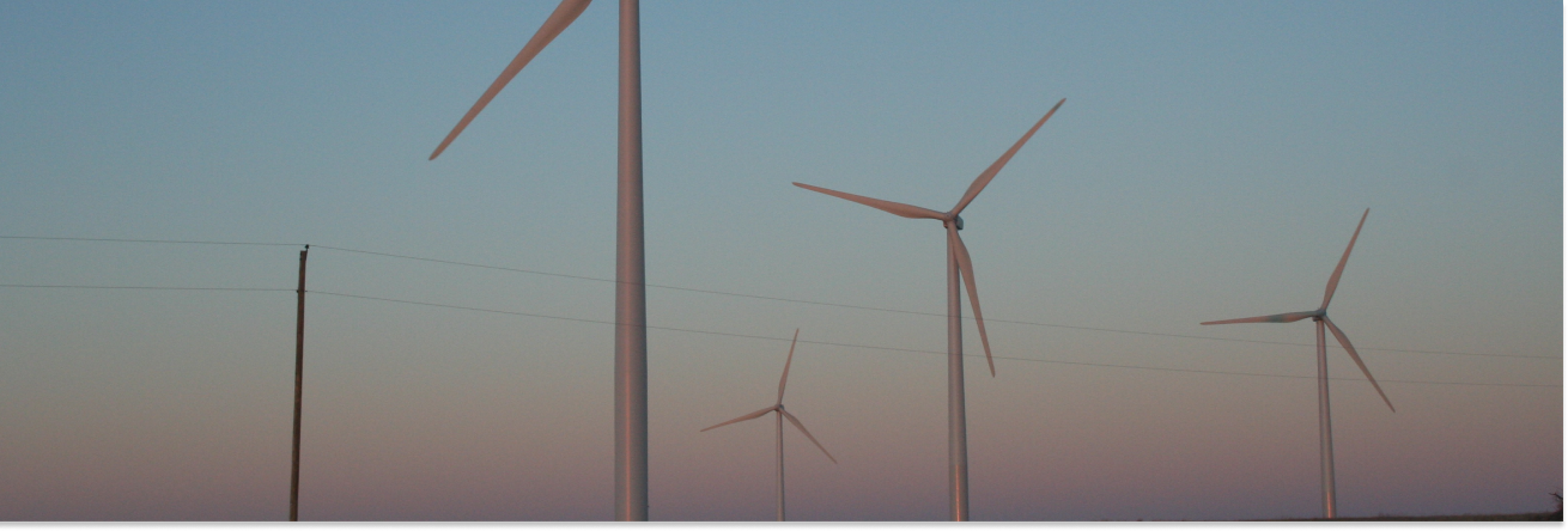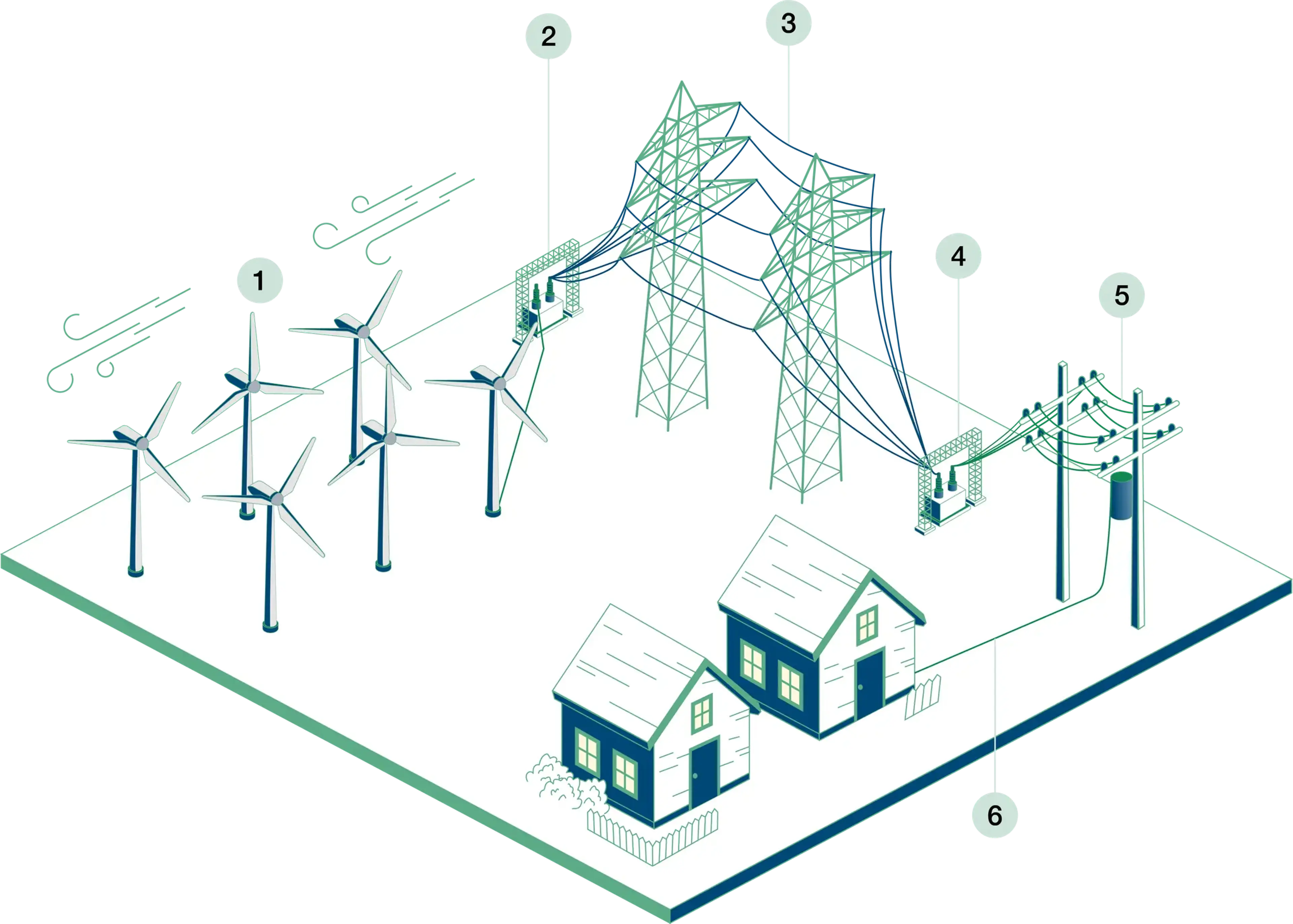
Why Wind
Why Wind
What you should know about wind energy
What you should know about wind energy
Our wind projects help generate economic stability through local business-sustaining job creation, landowner payments and tax revenues, all while producing cleaner, more reliable and affordable homegrown energy.
How Wind Energy Works
- 1 Turbines spin to generate electricity. Turbines can adjust depending on wind direction.
- 2 Transformer increases voltage of electricity.
- 3 Electricity travels through transmission lines.
- 4 Transformer decreases voltage of electricity.
- 5 Electricity travels through collection lines.
- 6 Electricity is delivered to customers.

Benefits of Wind Energy
Wind powers communities with a limitless, free and non-polluting renewable energy resource that consumes virtually no water. Learn more about the benefits of wind energy.
Community Investment
Protecting Family Farmland
Compatibility with Farming
Job Creation
Supports Energy Independence
Abundance of Wind Resource
Emission-Free Energy
Public Health Benefits
Conserving Water Resources
Explore Invenergy's wind portfolio
Invenergy has developed more than 19 gigawatts of wind energy across more than 120 projects, enough to power 5 million homes. Find out more about our successful track record in wind energy.
Learn more about wind energy at Invenergy.com


